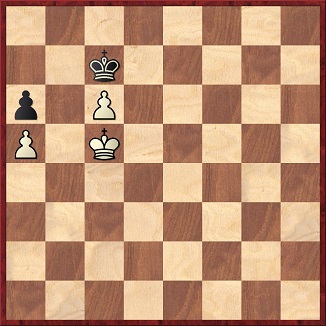
Edward Winter

White to move
In this familiar position White wins by 1 Kd5 Kc8 2 Kd4 Kd8 3 Kc4 Kc8 4 Kd5 Kc7 5 Kc5 Kc8 6 Kb6, etc., a model example of triangulation which appears in many endgame books. The caption is usually ‘Fahrni-Alapin’, sometimes with a date between 1909 and 1917 and occasionally with a mention of Munich. Although the exact occasion and complete game have yet to be found, we note that at a tournament in Munich in June 1909 Fahrni scored +3 –0 =1 against Alapin. When Fahrni himself gave the above position, on page 15 of his book Das Endspiel im Schach (Leipzig, 1917), he did so with just the vague heading ‘From a game Fahrni-Alapin’:

The position after 1 Kd5 Kc8 occurred in Fiebig-Tartakower, Barmen, 1905, but White missed the win, and the game was agreed drawn after 59 Kd6 Kd8 60 Kd5 Kc8. Source: Barmen, 1905 tournament book, page 250. A similar ending arose in W. Lange-C. Carls, Aachen, 1934. White’s king was on e2 and he had a pawn at h3; Black had his king on e4 and pawns at f4 and h4. The game ended: 1…f3+ 2 Kf1 Kf5 3 Ke1 Ke5 4 Kf1 Ke4 5 Ke1 Ke3 6 Kf1 f2 and wins. Source: Schackvärlden, July 1934, page 254. In more recent times, a notable example of the Fahrni ending has been Alburt-Kasparov, Daugavpils, 1978.
Incidentally, one of the many monographs to give the Fahrni win is volume 1 of Finales de ajedrez by Ramón Rey Ardid (1903-88), published in Saragossa in 1944. It is one of five such books by him that we own (on pawn-only, pawnless, queen, minor piece, and rook endings). They are substantial works, in terms of both analysis and length, and it is unfortunate that endgame writers today tend to ignore them.
(2425)
We now see that the ‘Fahrni position’ was published on page 82 of the March 1911 La Stratégie. In an item which mentioned neither Fahrni nor any other player, Michel A. Tossizza gave an extract from his 1910 book Etude explicative d’une partie d’échecs. Le Gambit Evans.
(2458)
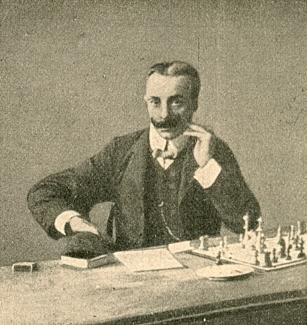
Hans Fahrni, from page 487 of the Barmen, 1905 tournament book (C.N. 4967)
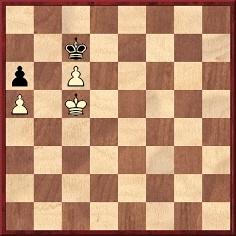
This ending is usually published in books with the caption ‘Fahrni-Alapin’ (see pages 42-43 of A Chess Omnibus), but we are grateful to Anssi Korhonen (Helsinki) for pointing out that the position appeared in Emanuel Lasker’s Common Sense in Chess. Depending on the edition, the page numbers are 108-110, 108-109 or 126-127. The first of these references relates to the original edition of 1896.
Lasker wrote:
‘White has two chances of winning, the one based on his passed pawn, the other on the weakness of the black RP. The black K occupies at present a position of advantage in regard to both. This is changed by the following manoeuvre:
1 K-Q5 K-B 2 K-B4 K-Q 3 K-Q4 K-B 4 K-Q5 K-B2 5 K-B5.
Now the move is changed, and White wins easily; or
4...K-Q 5 K-Q6 K-B 6 P-B7 K-Kt2 7 K-Q7
and mates in a few more moves.’
(5157)
Christian Sánchez (Rosario, Argentina) notes that the position was ascribed to Kling and Horwitz in Carlo Salvioli’s book Il giuoco degli scacchi. Our correspondent refers to page 546 of the third (1921) edition, and we can add that as late as 1961, in the eighth edition (page 742), the same text stood. Mr Sánchez points out, though, that on page 6 of Chess Studies and End-Games by B. Horwitz and J. Kling (London, 1889) the units were placed one file to the right:
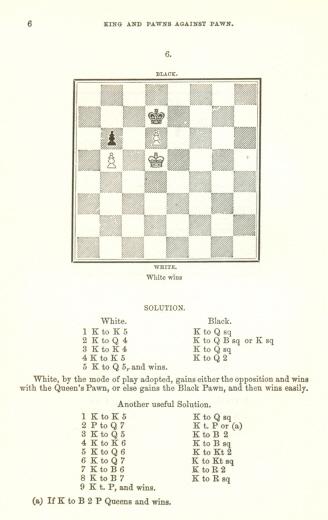
(5178)

Regarding this position a number of points have been made:
Now we are grateful to Harold van der Heijden (Deventer, the Netherlands) for the following additional information:
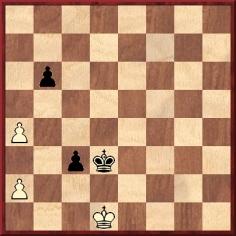
The intention is 1 a5 bxa5 2 Kc1 a4 3 Kd1 Kd4 4 Kc2 Kc4 5 a3 (the ‘Fahrni position’). Black now wins with 5…Kd4, and there are further problems with the Kling and Horwitz solution. For example, 1 Kc1 draws, 3…c2+ wins, and both 5 Kd1 and 5 Kb1 draw.
(5184)
Addition on 9 April 2022: Courtesy of the Cleveland Public Library we show the full text by Michel A. Tossizza in his 1910 book Etude explicative d’une partie d’échecs. Le Gambit Evans, as well as that material’s appearance in the March 1911 issue of La Stratégie:

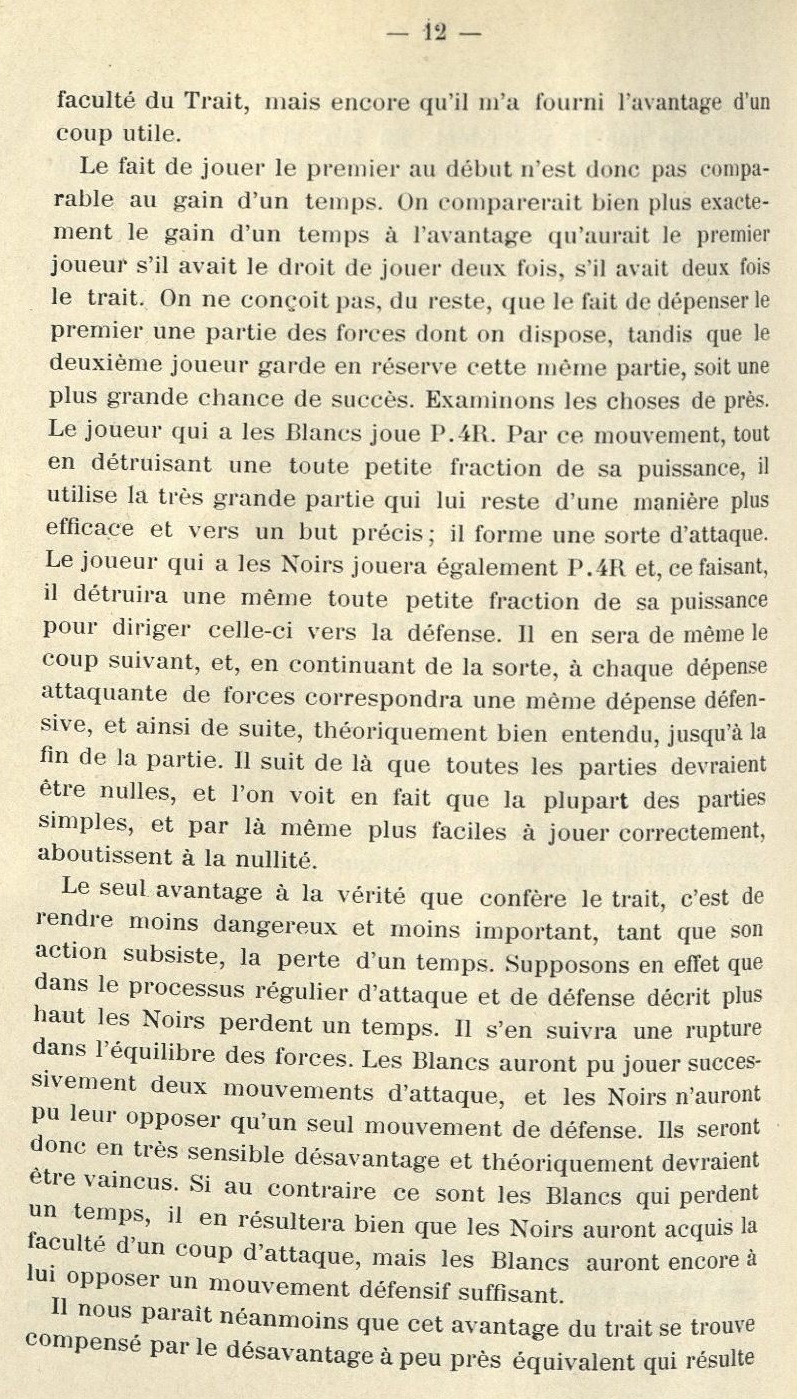
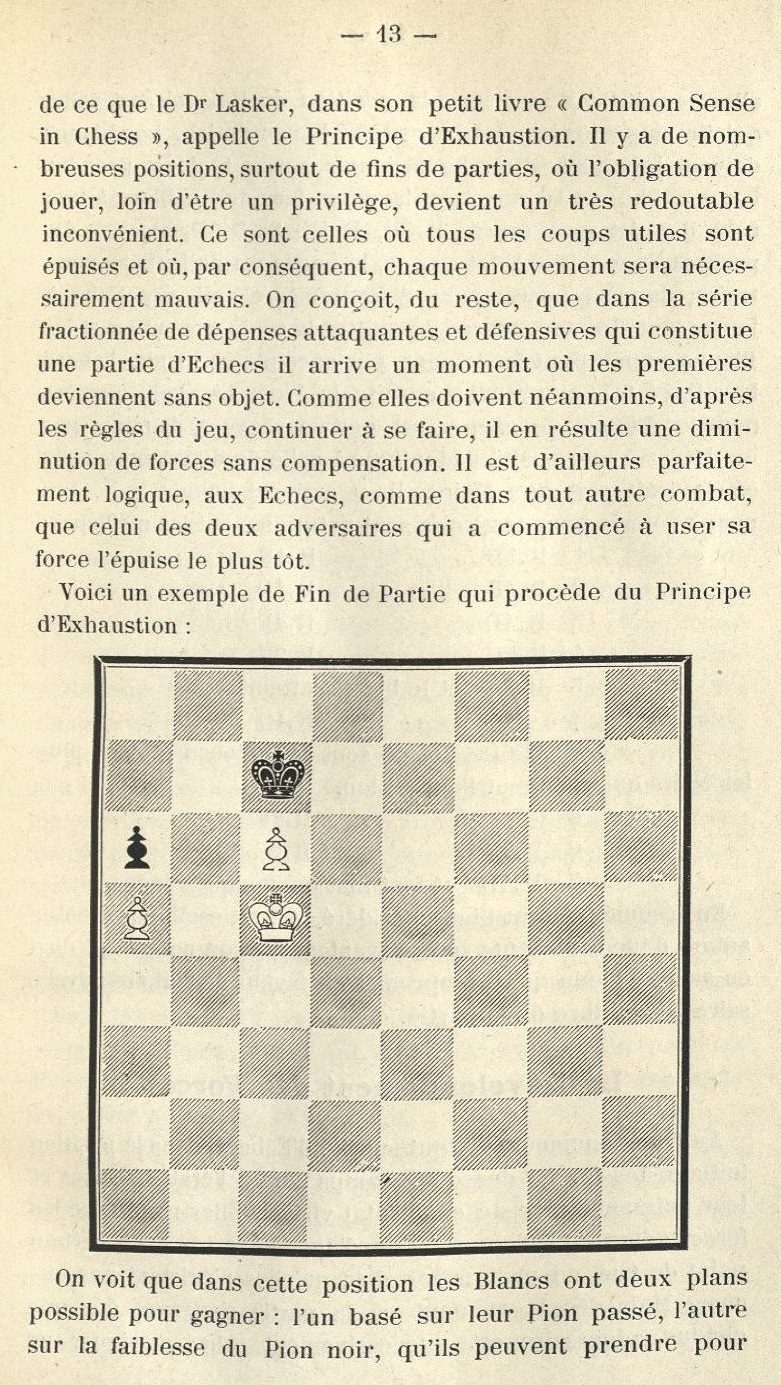
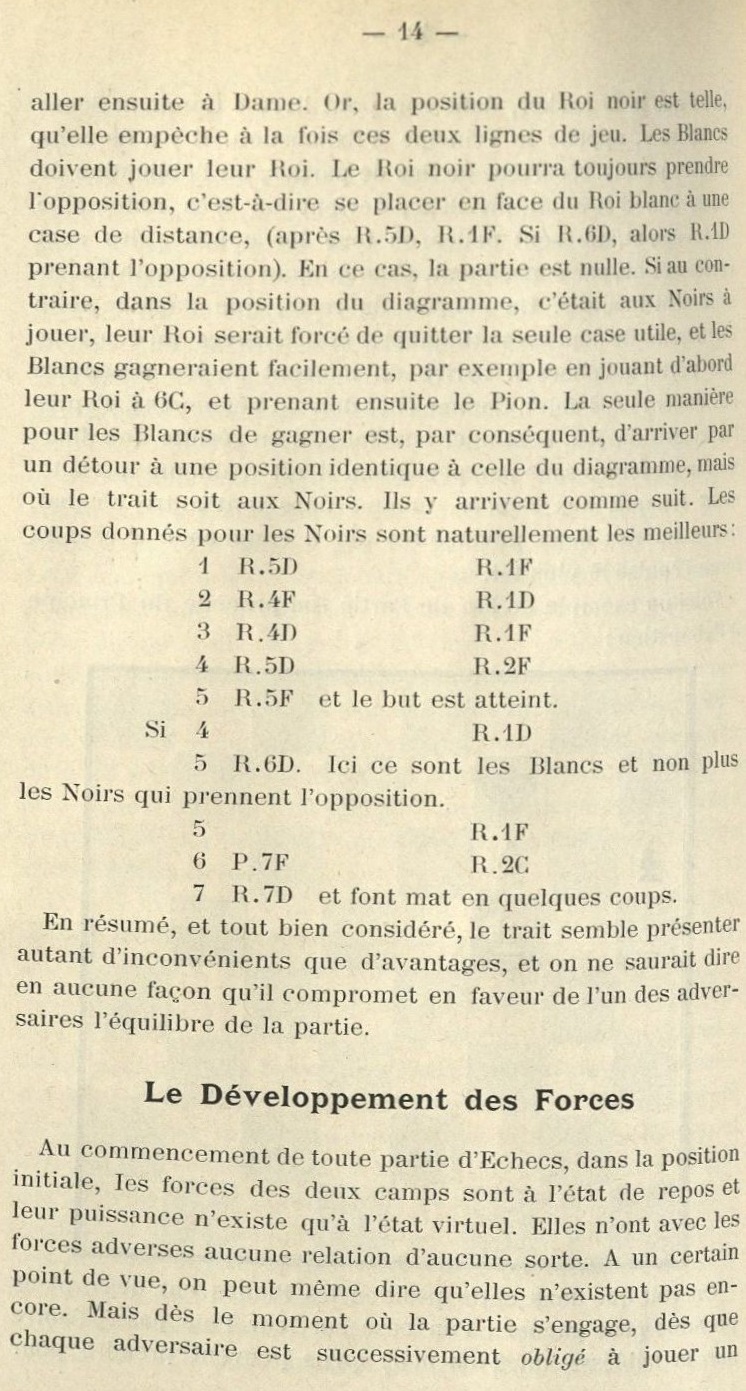
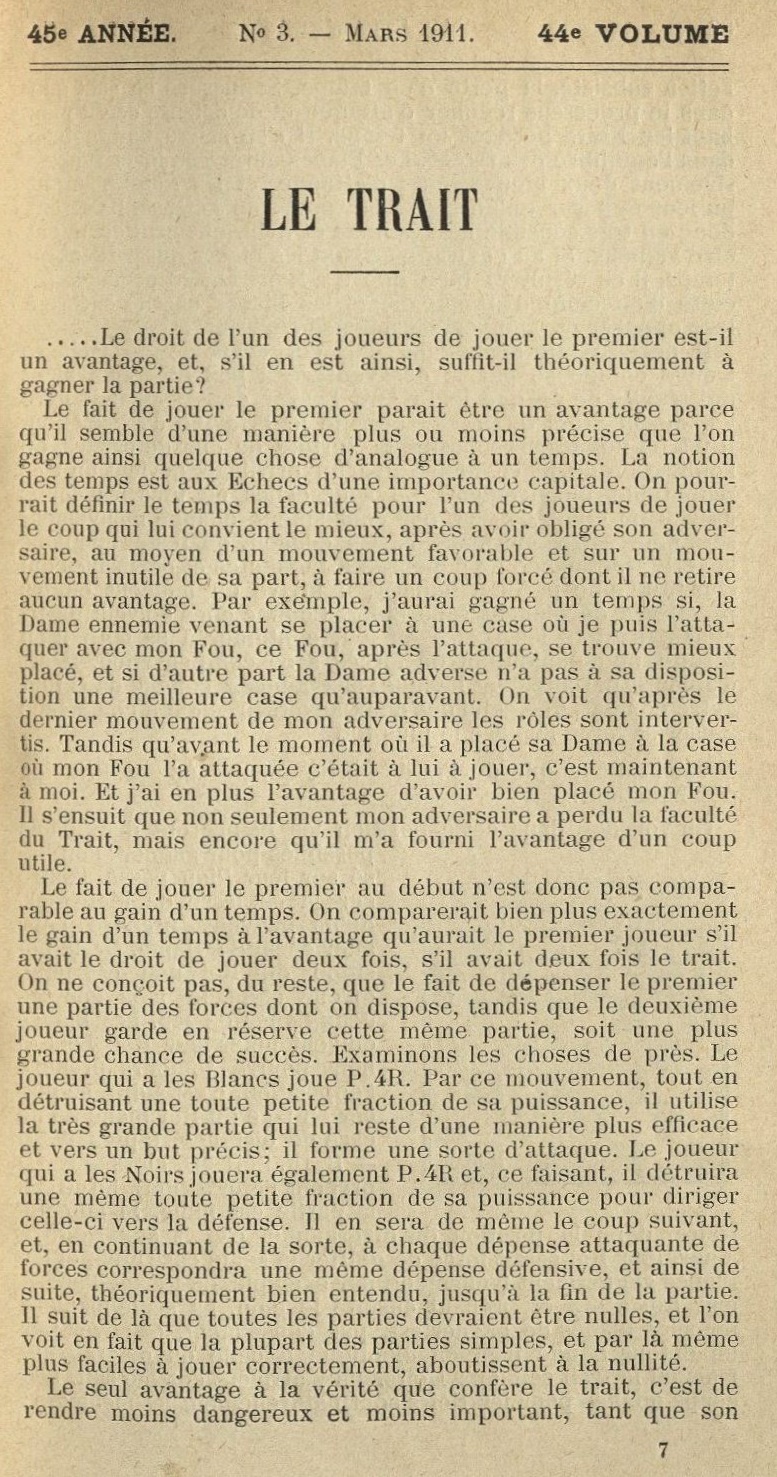
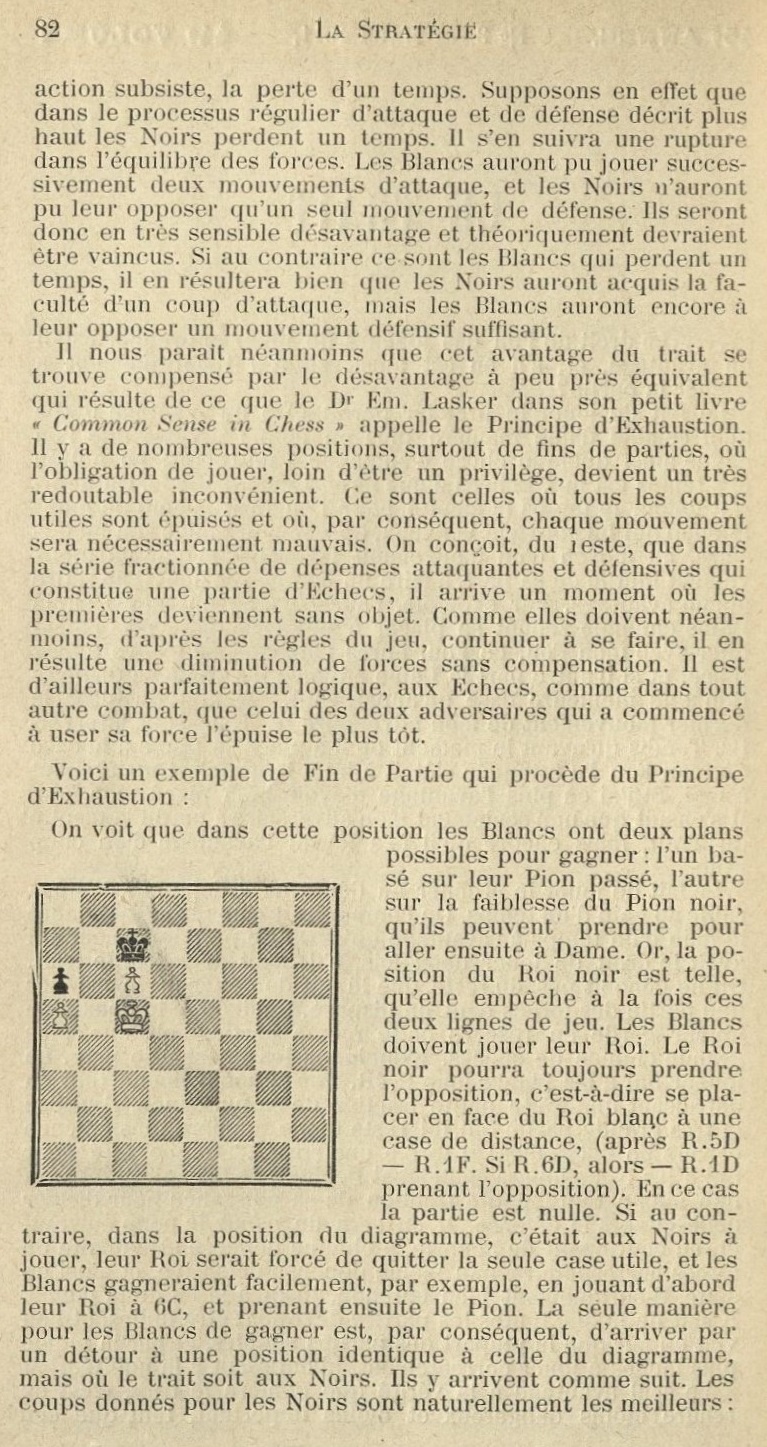
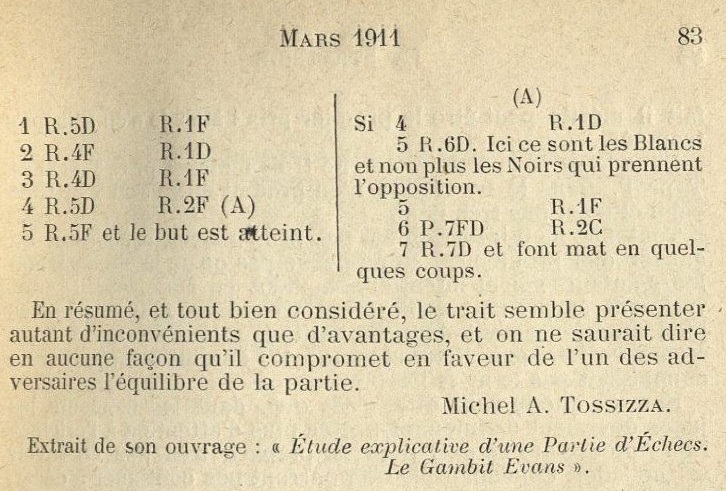
Addition on 7 July 2024:
From Herbert Bastian (Riegelsberg, Germany):

‘The pawn ending in C.N. 5157 first appears in Chapais’ chess manuscript on page 93, which according to my analyses was written in 1772. The solution agrees with Lasker’s in Common Sense in Chess. It is conceivable that Lasa, the owner of the manuscript since 1855, had made the position known in Berlin. The Chapais manuscript contains no diagrams and a singular notation in which the chessboard is numbered in a meandering sequence from 1-64 (a1-h1 = 1-8, h2-a2 = 9-16, a3-h3 = 17-24 and so on). The author of the manuscript, which is in the library of the Polish Academy of Sciences in Kórnik (Poland), was most probably the French scientist Gaspard Monge (1746-1818). The manuscript comprises a total of 523 pages and was completed between 1772 and 1777.’
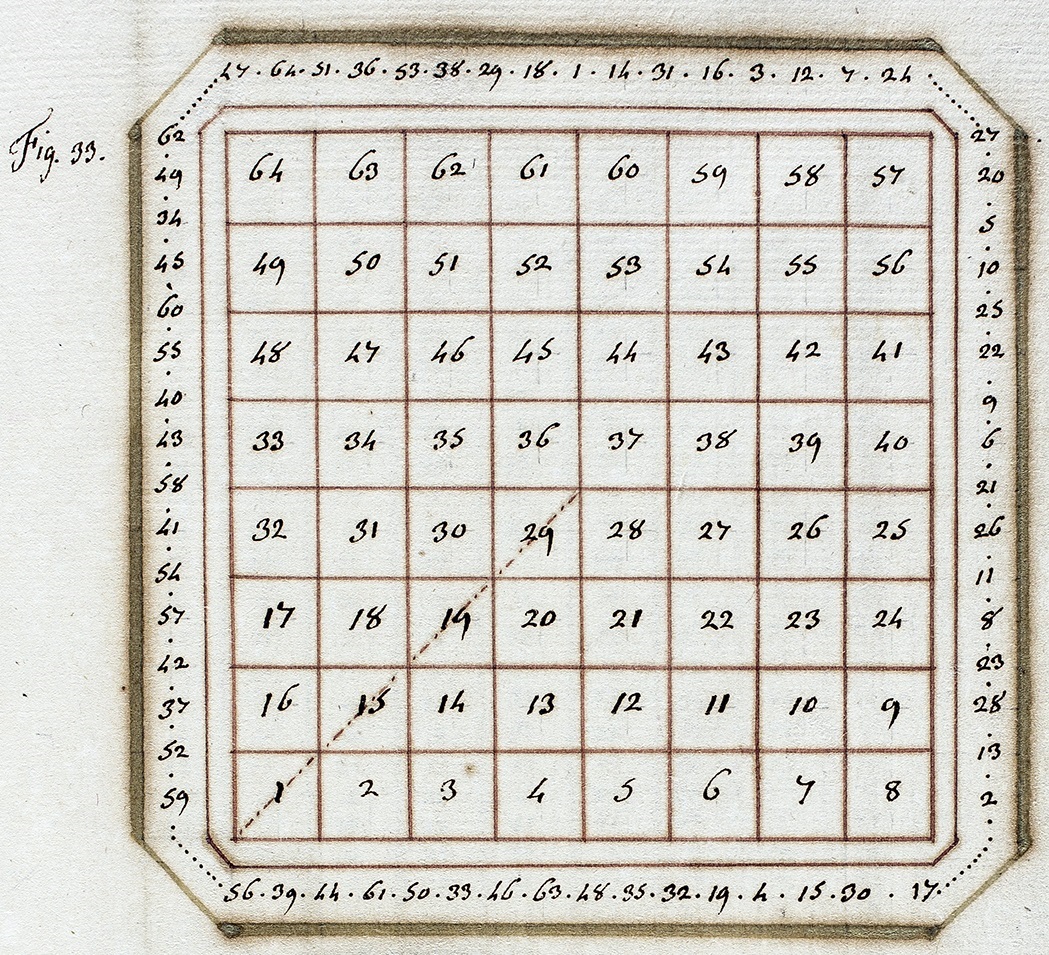
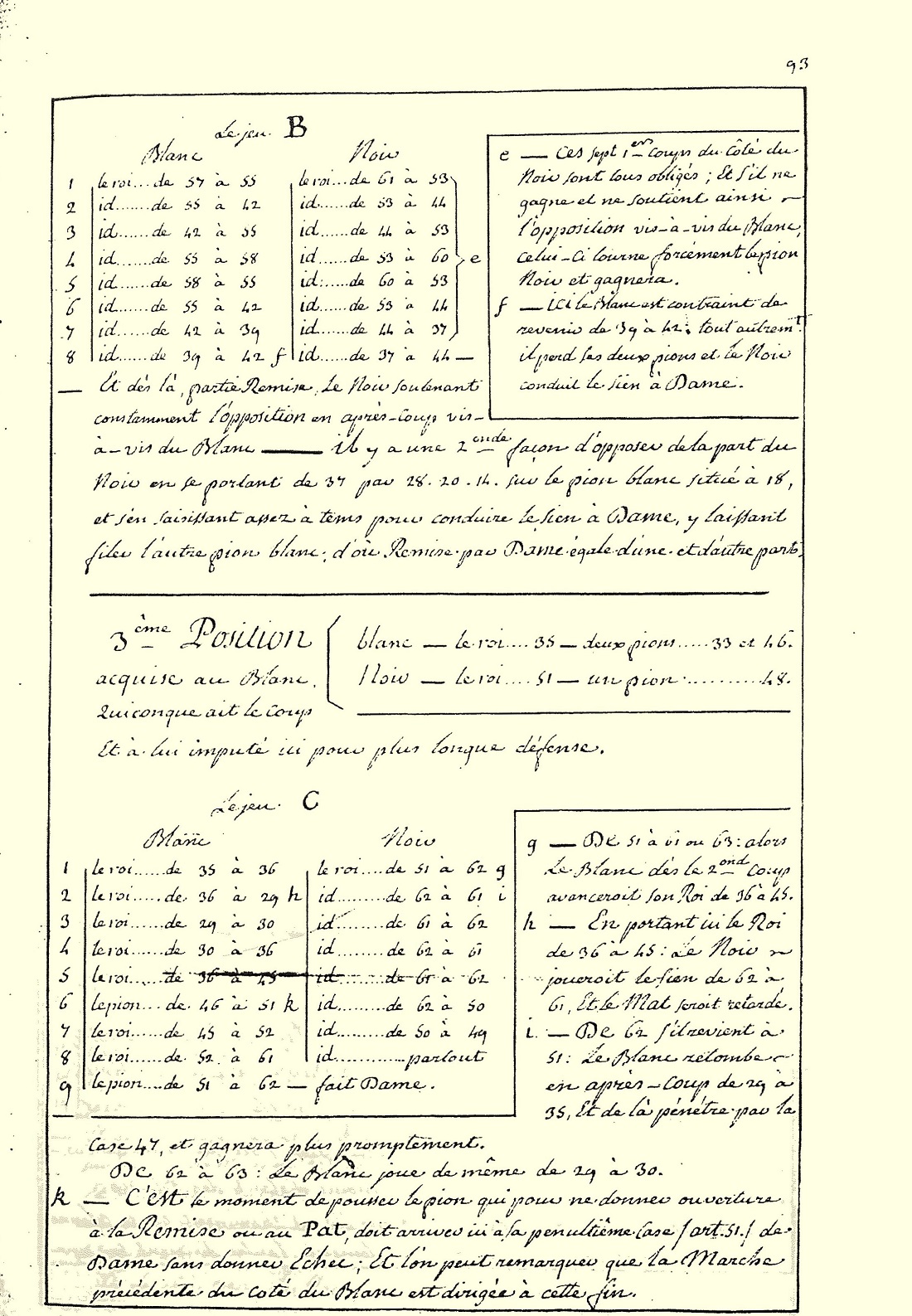
Latest update: 29 March 2025.
To the Chess Notes main page.
To the Archives for other feature articles.
Copyright: Edward Winter. All rights reserved.